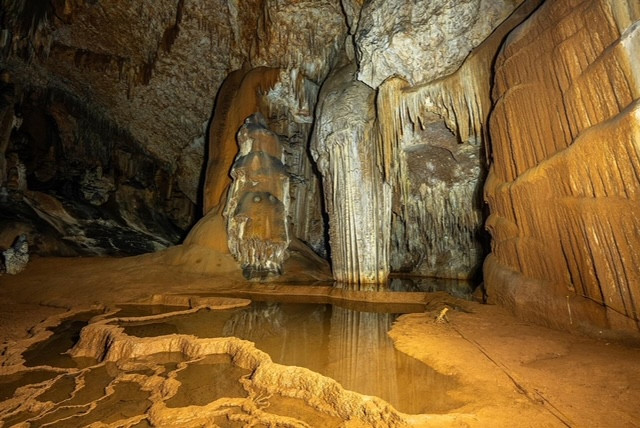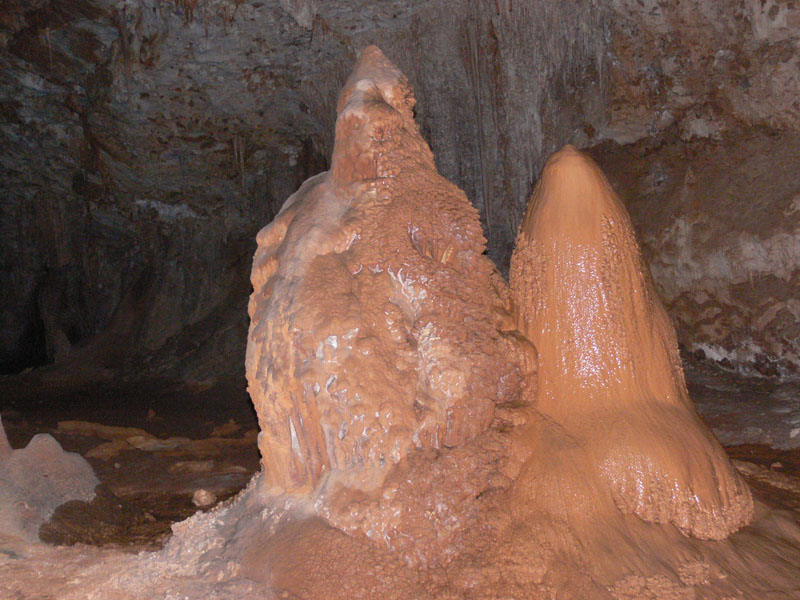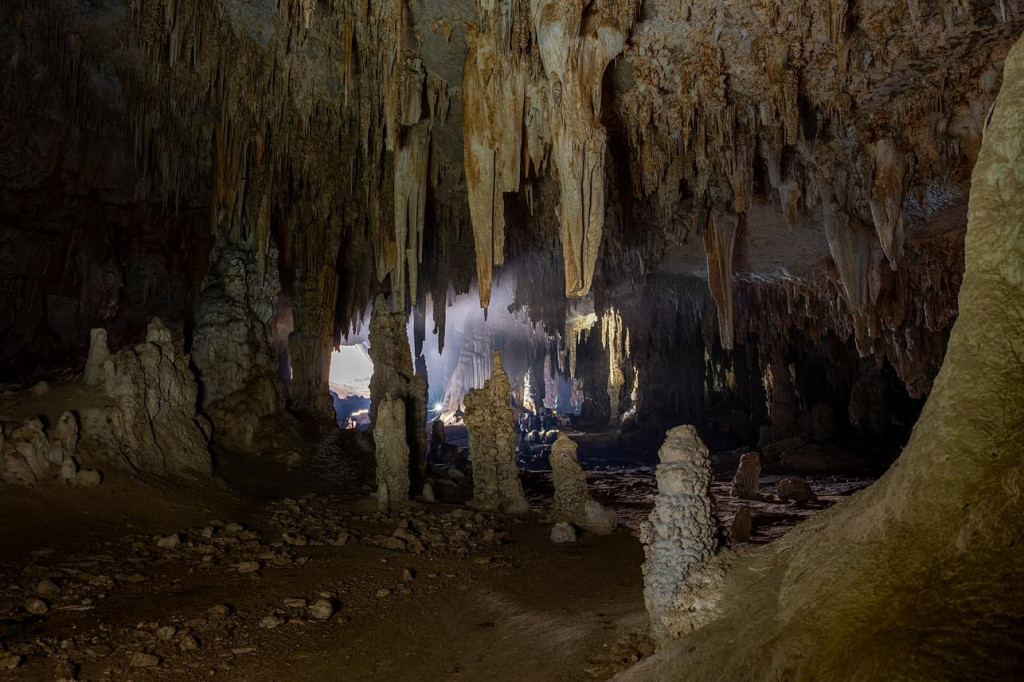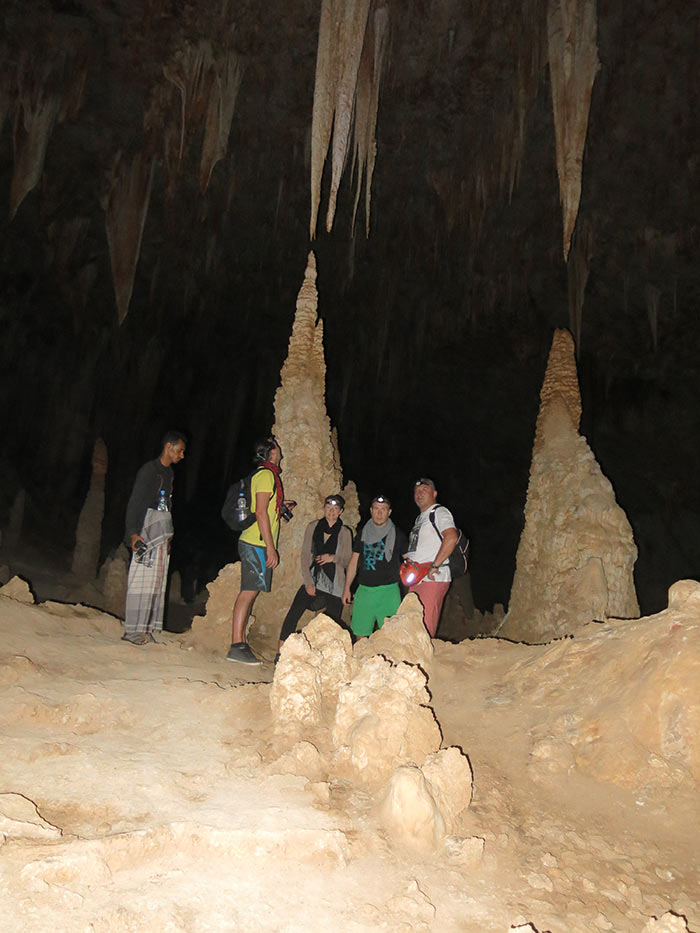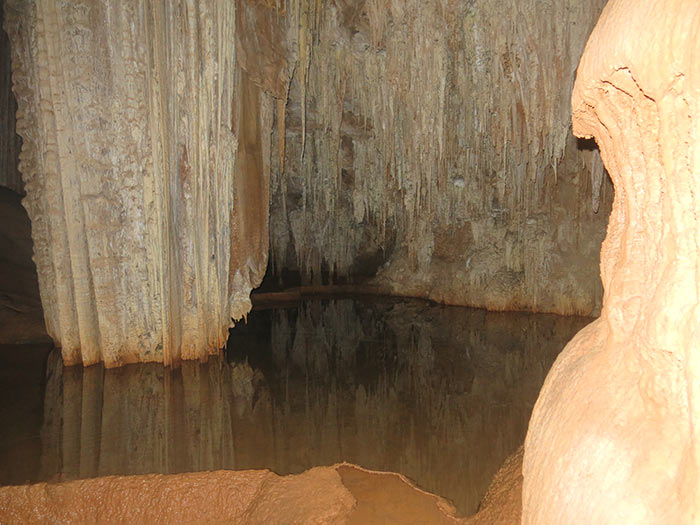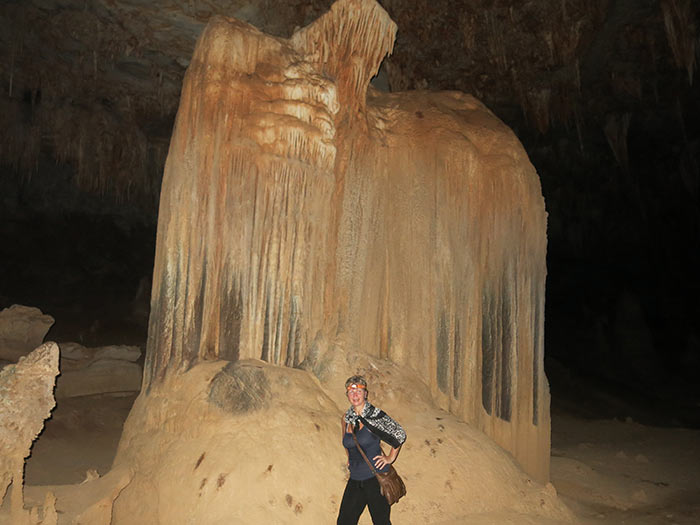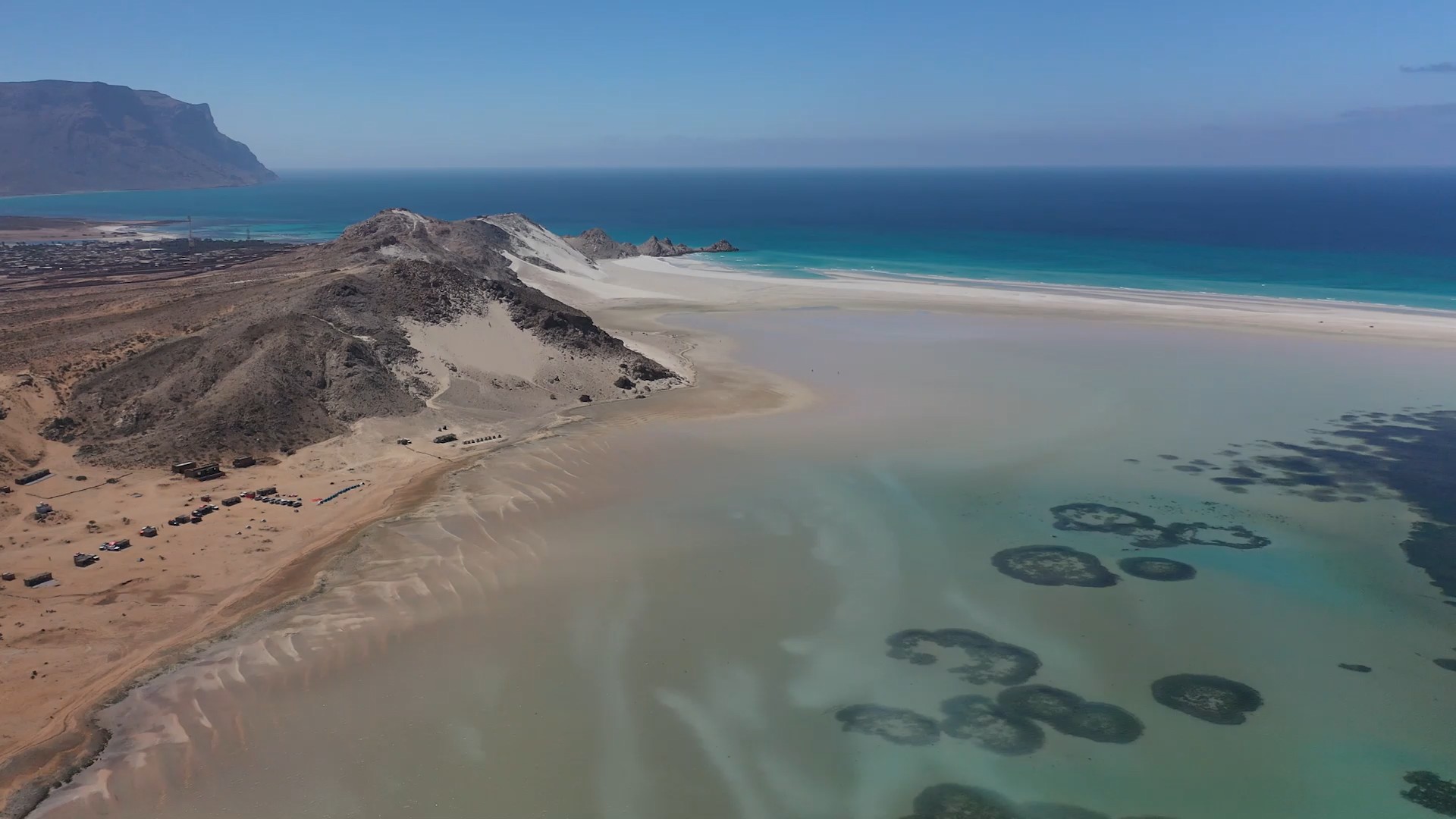

The caves of Socotra
Caves of Socotra
When exploring the beauty of the island, don’t stay only on the surface. The island’s significant limestone composition creates ideal conditions for the formation of caves.
Most underground systems consist mainly of simple overhangs and tunnels. However, there are also caves of impressive size.
One such example is the island’s largest cave, Hog Cave (Al-Hoq), stretching over 3 km and dominating all others in terms of scale.
It is located high in the rocky cliffs of the northeastern part of the island, nestled in a massive granite wall along the coastline.
The two-hour hike to the cave itself is a true adventure. Along the way, you’ll pass many succulents and other fascinating plants that create an almost prehistoric atmosphere. As a reward for your effort climbing the steep stony slopes, you’ll be greeted by a breathtaking view of the deep blue sea from the cave’s entrance.
The cave interior is cool and completely dark. A flashlight is essential, as there is no installed lighting, railings, or paths. Everything remains in its natural and untouched state – part of what makes the cave so magical. Visiting Hog Cave is undoubtedly a remarkable experience and absolutely worth the effort.
The limestone formations have an almost magnetic charm. Recent archaeological findings suggest this is a highly significant and possibly pivotal site in the history of the entire island. The main passage forms a long and initially high tunnel. One of the most striking features is a several-meter-tall column (stalagnate) rising above a small pond at the currently known end of the cave.
Another cave is located on the southern coast beyond the sand dunes of Noged – the Dogub Cave. It is easily accessible by car. At the cave entrance, you’ll find one of the most precious liquids of the dry southern coast – fresh water. Unsurprisingly, this cave provides a haven for various animals, especially bats and swallows.


